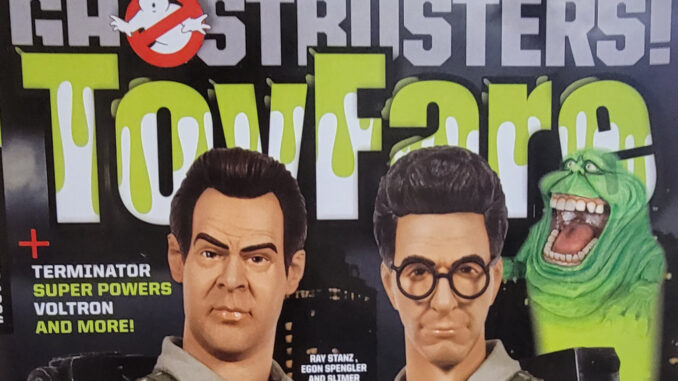
I was going through some old magazines when I came across this issue of ToyFare I had sitting in a box. ToyFare issue #144 covered a lot of Ghostbusters toys, obviously, but I was surprised to find not just one, but two interviews in it that either referenced Ghostbusters: The Video Game, but also one that was directly about the game. I looked online and couldn’t find the interview about the video game anywhere, so I figured I would transcribe it for you here. There are some really interesting things here, including something regarding whether or not the game was to be considered canon.
It seems that at the time of this interview, the game was considered canon and would complete what the creative director calls the “Gozer Trilogy,” but with Ghostbusters: Afterlife coming soon, we could learn whether or not the video game can still be considered canon. Maybe not the first time we see the movie, but as we worth through our first 100 screenings of the movie, we’ll be analyzing the dialog, props, etc, and see if they either reference events around the time the game would have taken place, or if they say that nothing really happened after the events in 1989 in Ghostbusters 2.
Who You Gonna Play?
Everything you need to know about ‘Ghostbusters: The Video Game’
By Steve Sunu
Fire up your proton packs and get over your slime phobia: you’re about to become part of a legendary team of paranormal investigators!
Well, virtually speaking. This summer, Atari releases Ghostbusters: The Video Game, which finally gets the next-gen video game treatment, and we couldn’t be more excited. To get the skinny, we called up creative director Drew Haworth of developer Terminal Reality, who proved why this game has more than a ghost of a chance.
TOYFARE: How did the Ghostbusters project first get started?
DREW HAWORTH: It was just one of those situations where everything fell into place: we were looking to do a new, high-quality project; Sierra was looking for a developer with the appropriate tech and skills for a Ghostbusters game. Sony was interested in reviving the Ghostbusters franchise and Dan Aykroyd was already thinking about a CG Ghostbusters movie, so he was open to pursuing a game.
TOYFARE: When did you first start thinking that Ghostbusters had the potential to be a great next-gen game?
DREW HAWORTH: We felt that Ghostbusters hadn’t really ever received the game it deserved. It was sort of the last of the great properties that hadn’t really been addressed by modern games, but was just screaming for it. We were pretty sure we could finally deliver that fun, authentic, and actually new gameplay experience that would be required.
TOYFARE: How close is the final product to your original vision?
DREW HAWORTH: It’s surprisingly close, actually. I say “surprisingly,” because while there are a number of givens when approaching a Ghostbusters game, there are also a TON of options you need to consider: what direction to take with the story and setting (in time, that is; it always had to be in NYC), whether to weight balance towards mainstream or core existing equipment, where to go with the characters and story…the list goes on and on. So the resulting game is a little more fast-paced and action-oriented than the original concept.
TOYFARE: With Ghostbusters legends Harold Ramis and Dan Aykroyd writing the game, are the events canonical to Ghostbusters? Did this add any extra pressure?
DREW HAWORTH: Yes, the game is in canon and approved as such. When we started, there was no third film planned, so we just grabbed the reins and went for the brass ring to try to make the third movie, complete the Gozer Trilogy.
And, yes, lots of pressure. We approached both the original and the new material with what you could almost call a religious reverence. We’re pretty serious when it comes to Ghostbusters; that may or may not be considered ironic.
TOYFARE: What are some of the different types of things the player will be able to do in the game? Is it all trapping ghosts in exciting and different ways, or are there other actions you can perform as well?
DREW HAWORTH: In addition to the ghost-trapping, which incidentally can be accomplished in a wide variety of exciting and different ways, the game incorporates the PKE meter and paragoggles for tracking and scanning the huge number of ghosts and supernatural enemies; Tobin’s Spirit Guide is now loaded onto the PKE meter digitally.
New Ghostbusting equipment is introduced throughout the game to give the player lots of tactical options for taking down paranormal threats. The world is littered with all kinds of cursed artifacts, objects that have been imbued with spirits. The Ghostbusters have to find and remand as many of these as possible until Ray and Egon can find a method for exorcising them.
TOYFARE: What are the fundamental differences between the Wii and 360/PS3 builds?
DREW HAWORTH: Well, both versions share a roughly similar storyline, and a lot of the dialogue, though there are some distinct differences. The art styles diverge greatly. The 360/PS3/PC version utilizes a more realistic, cinematic “next-gen” approach, while the Wii version uses a very appealing stylized-3D look. I’m not sure exactly what term RedFly Studio uses for it: we lazily call it a “Pixar look.” It’s perfect for the Wii.
Obviously the control schemes between the two are different, as RedFly is using the Wii controllers to maximum effect: you pitch the controller to throw out a trap, literally shake off slime or marshmallow goo when you’re covered with it; really fun features that don’t wear players out during marathon sessions. The PS3 version uses the 6-axis controls to let players literally “slam” captured ghosts around in the environment.
There are some other features, enemy types and gameplay that vary between the versions, too. I think players with more than one system will really enjoy both versions.
TOYFARE: What was the process like to work with Aykroyd and Ramis? How involved were they in crafting the storyline? Did anyone on the development team pitch any jokes?
DREW HAWORTH: We pitched — and landed — a lot of the jokes in the game to Dan and Harold! If you’re a big comedy fan, and you realize what these guys are responsible for creating in terms of modern comedy, when they respond “Hey, that’s a great line,” to something you’ve written or thrown out, that will send you floating around the ceiling for a while.
TOYFARE: What steps were taken to ensure that the new equipment and ghosts feel like part of the films?
DREW HAWORTH: Like everything else in the game, all the new equipment and enemies were run by Dan and Harold for accuracy, appropriateness and Ghostbusters-worthiness. When we wanted to introduce the equipment (never “weapons”) into the game, we went to Dan with the concepts. He looked at them and, on the spot, told us what each equipment type should be called, how it corresponds to actual physics, should look like. He’s a believer and he knows his stuff in serious depth.
TOYFARE: Will we be seeing a lot of old familiar faces in terms of ghosts and ghoulies?
DREW HAWORTH: Yes, definitely. All the really crucial iconic characters return: Slimer, Stay Puft, Vigo, the Grey Lady librarian ghost — they’re all back to help forward the third Ghostbusters story. We also brought them back in order to help convince potentially skeptic players (and nothing breeds skepticism like the possibility of a high-quality licensed movie title) that this is indeed the genuine article.
TOYFARE: Did you draw any inspiration from The Real Ghostbusters animated series?
DREW HAWORTH: We avoided reference to any of the animated series. This isn’t a reflection of their quality, but because the animated series isn’t actually considered canon, and everyone from Sony to the original creators to us didn’t want to create any confusion by blending them.
We understand why this disappoints some players, and even some of the people on our teams — especially the younger ones that grew up with the series as their prime source of Ghostbusters — but there is enough excellent material to derive from the original material to fuel twenty great games.
TOYFARE: What do you think fans will most enjoy about the game?
DREW HAWORTH: Getting to be a Ghostbuster. That experience is indelible and universal to Ghostbusters fans, even though no one has actually ever experienced it.
Everyone knows when it feels “right,” and as we learned from our own testing, when it’s just wrong.
TOYFARE: We know it’s early, but are there any possibilities of a sequel to the game?
DREW HAWORTH: We would love to develop a sequel. We’ve got a LOT of ideas percolating to continue the saga. And we’d really like to tie it into the possible third movie, which is a very real possibility as I’m saying this.
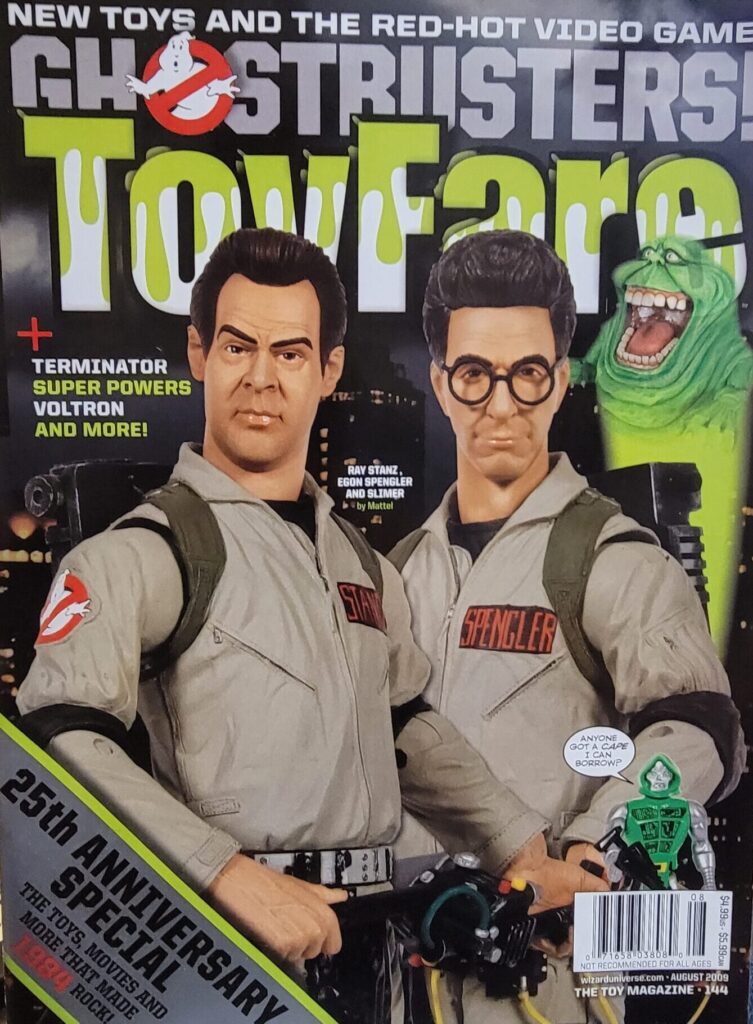
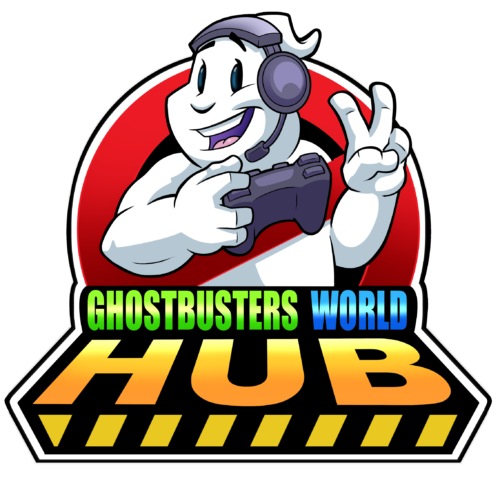
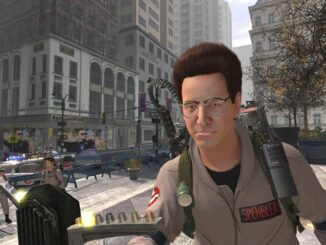
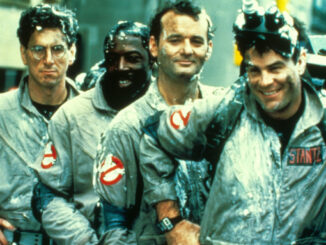
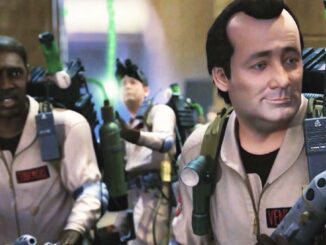
Be the first to comment